10 Iconic Floral Still Lifes You Need to Know
Flowers have long been a central theme in still-life painting. Each flower carries its own symbolism. For example, they can represent innocence,...
Errika Gerakiti 6 February 2025
Fernando Botero was a Colombian figurative painter and sculptor. Once you see his art, you will never forget it. He depicted people and figures in large, exaggerated volumes. He was considered the most recognized and quoted living artist from Latin America and his art can be found in highly visible places around the world. Are you ready for this ride? Here are 10 facts you need to know about Fernando Botero. I can assure you, it is going to be big.
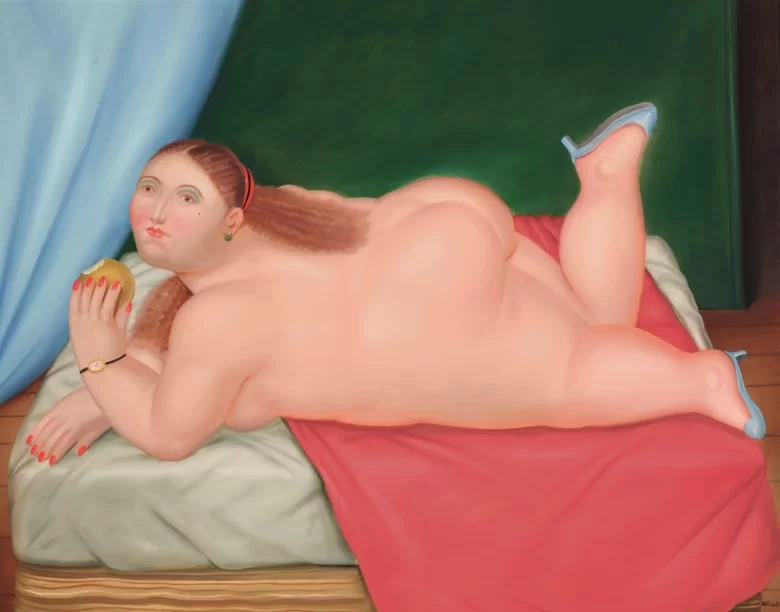
Fernando Botero, Colombiana Comiendo Manzana, 1982, private collection. Christie’s.
I was looking for the right word here – enlargement, exaggeration, plumpness. When you see any of Fernando Botero’s art, you know what I mean. You can’t mistake the way he paints with anyone else. The style has even its own name: Boterismo. It is not only Botero’s signature, but it is also his way of representing political criticism or underlining some aspects of daily life with humor.
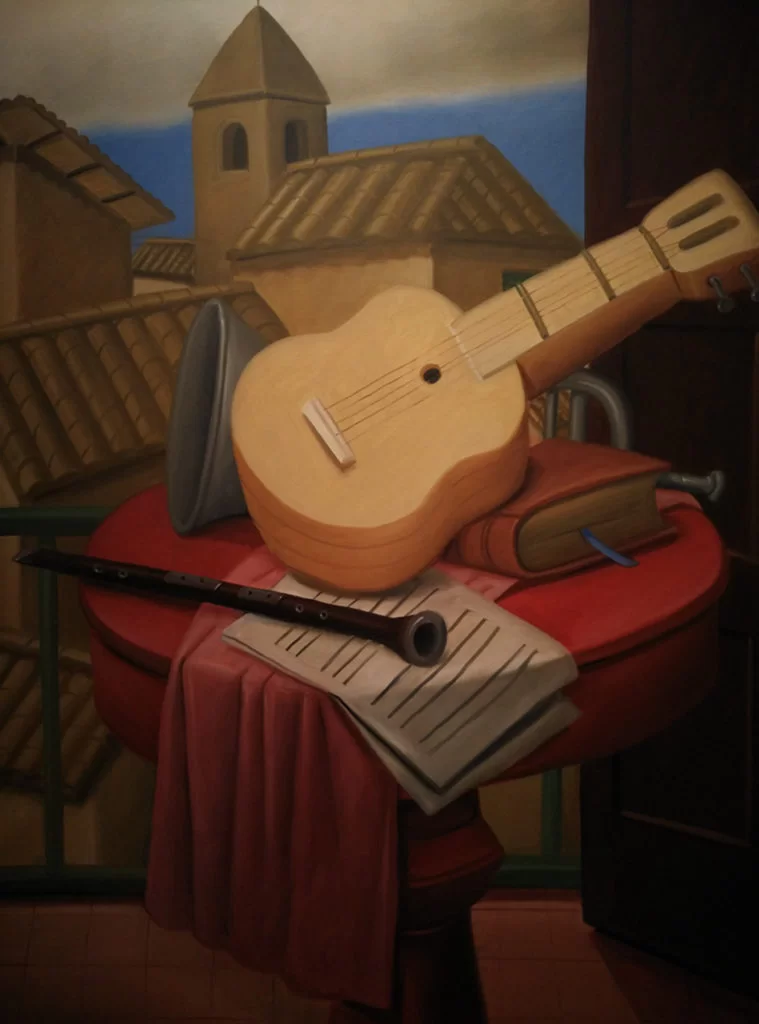
Fernando Botero, Still Life with Guitar, 2002, Museo Botero, Bogotá, Colombia.
There is a funny story that explains how the artist started his style. In 1956, while Botero was living in Mexico City, he painted a mandolin with an unusually tiny sound hole. This led to the instrument having huge proportions. He loved it and started to paint like this.
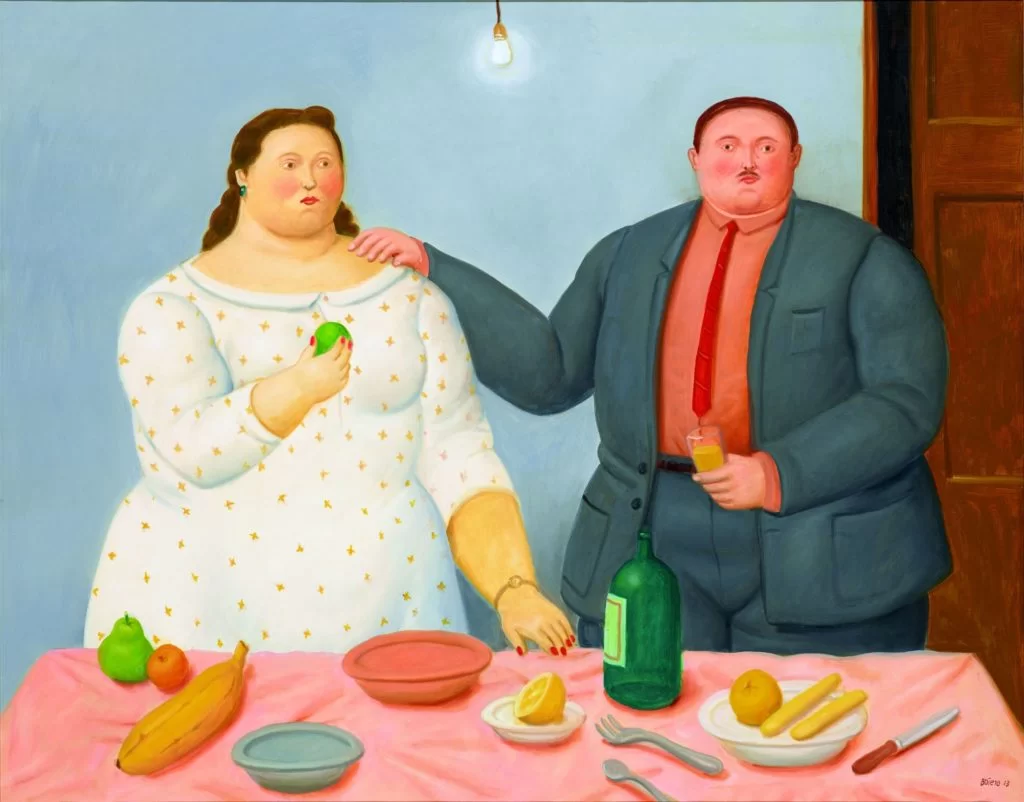
Fernando Botero, Couple with Still Life, 2013, private collection. Artnet.
Botero always claimed that he doesn’t paint proportionally accurate figures, for him it is the “sensuality of form”. The volume of his characters allows him to emphasize and highlight certain features.
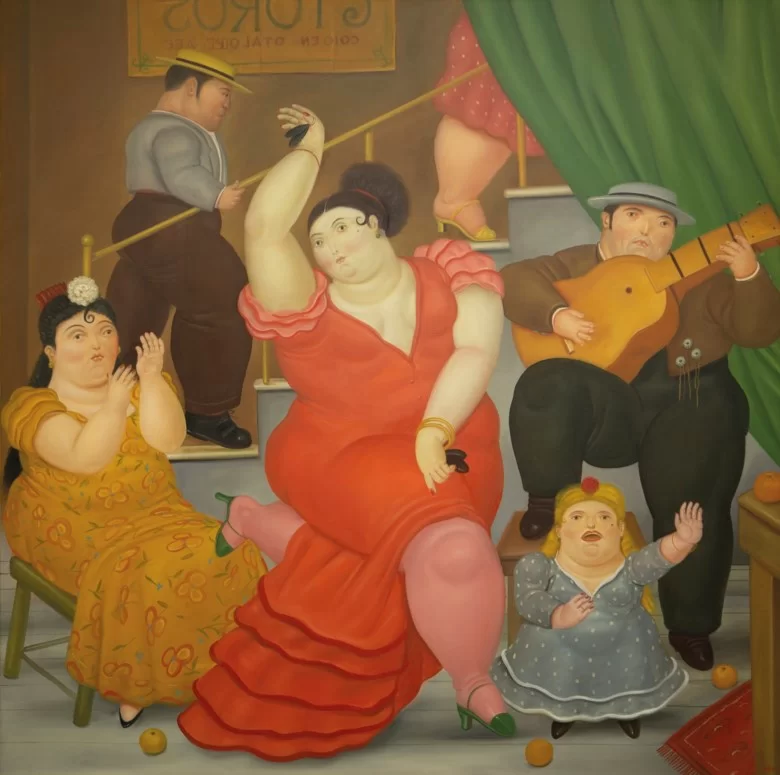
Fernando Botero, Tablao Flamenco, 1984, private collection. WahooArt.
Botero was born in 1932 in Medellín, Colombia. Located in a valley of the Andes mountain range, Medellín was at that time a relatively small and isolated city. His father, David, was a traveling salesman who died suddenly at the age of 40. This left a four-year-old Botero, his two brothers, and his mother (who worked as a seamstress) destitute.
In 1970s and 1980s Medellín became infamous for being a base of the Medellín Cartel. This was a highly organized drug cartel founded by Pablo Escobar. We will talk about that more later.
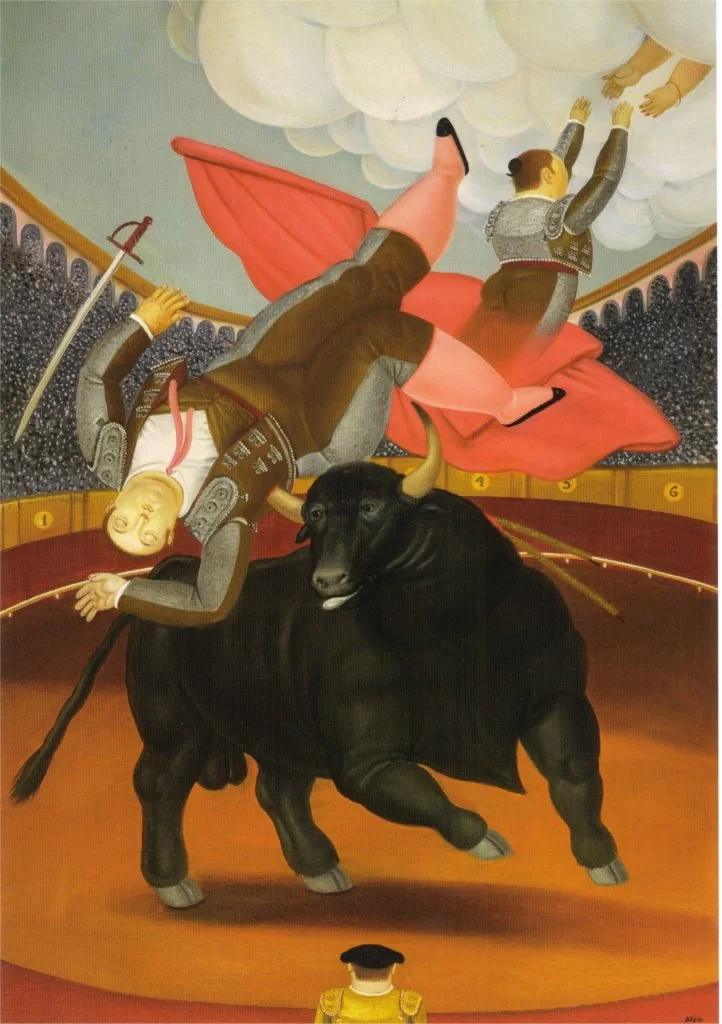
Fernando Botero, The Death of Luis Chalet, 1984, private collection. WikiArt.
Botero’s uncle, who was a father figure to the young artist, enrolled him in a training school for bullfighters. Luckily, this uncle soon realized that this wouldn’t work. The fact is Fernando Botero (then 12 years old) painted his first watercolors of bulls and matadors, instead of training. The paintings were sold by a man who traded tickets to bullfights.
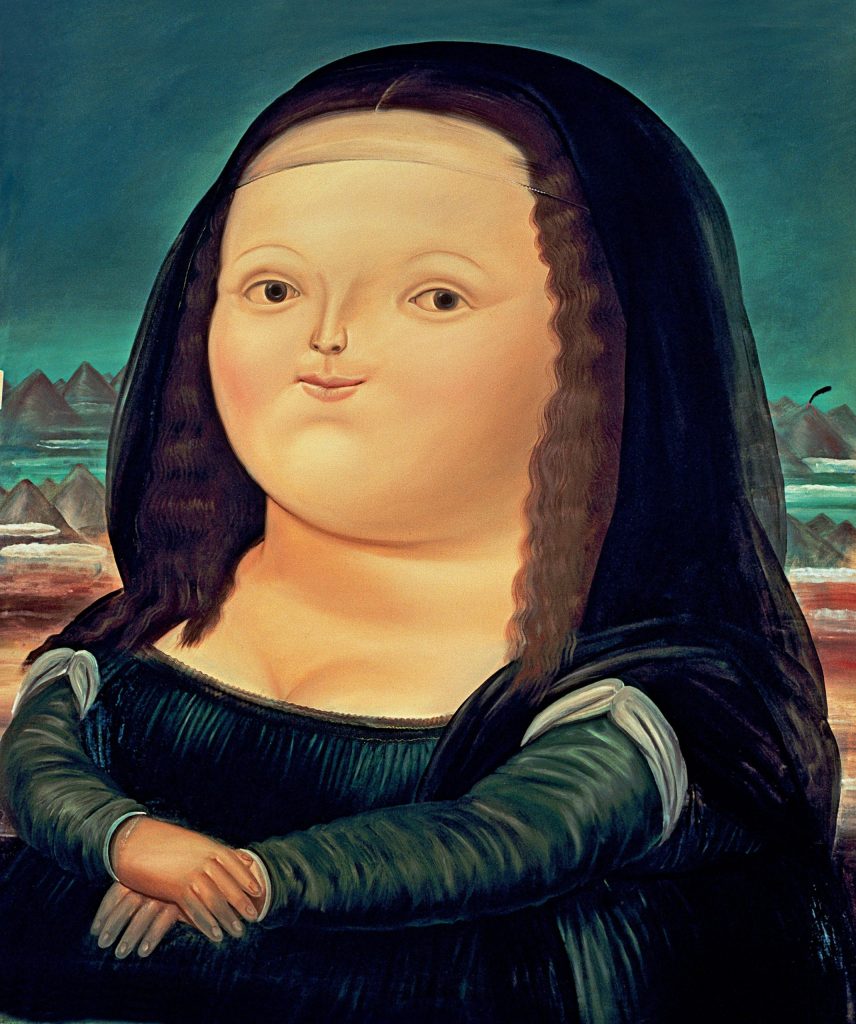
Fernando Botero, Mona Lisa, 1978, Museo Botero, Bogotá, Colombia.
At the age of 20 Botero won a second prize in Bogota’s Salón Nacional de Artistas. To celebrate he traveled to Europe where he spent a year learning about Renaissance artists and copying the Old Masters. It was a game-changer for him and influenced his art. Since that time he has created countless versions of the classic pieces of Leonardo da Vinci, Rubens, Velazquez, Jan van Eyck… You name it.
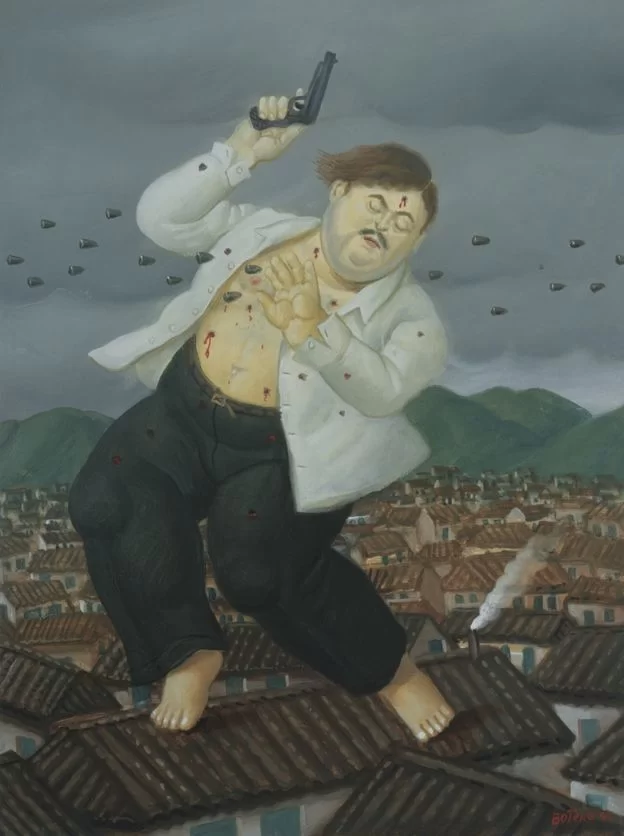
Fernando Botero, The Death of Pablo Escobar, 1999, Museo de Antioquia, Medellín, Colombia.
Even though Fernando Botero has stated that “art should be an oasis, a place of refuge from the hardness of life”, his work is at times very politically engaged. Beginning in the 1990s, he painted a series focusing on Colombia’s drug-related violence happening in his country. One painting, Death of Pablo Escobar, depicts the Colombian drug baron being gunned down by the police.
You can read more about it here but we need to mention that Escobar himself was known to have used works by artists such as Salvador Dalí and Pablo Picasso to launder money. Botero was reportedly dismayed when he learned that his works had been seized in a raid on Escobar’s home.
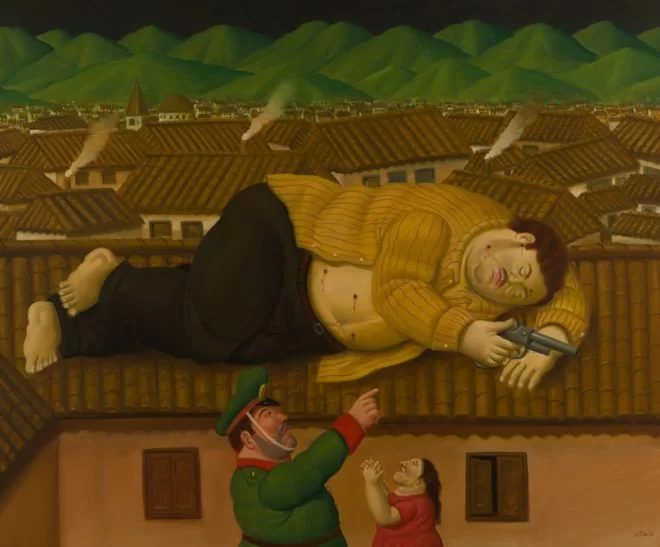
Fernando Botero, Pablo Escobar Dead, 2006, Museo de Antioquia. Medellín, Colombia.
Explaining his response to his country’s drug violence in 2000, Botero stated,
The Colombian drama is so out of proportion that today you cannot ignore the violence, the thousands of displaced and dead, the processions of coffins. Against all my principles I had to paint [the violence].
Martin Hodgson, “A painter’s mission to heal Medellin“, The Guardian.
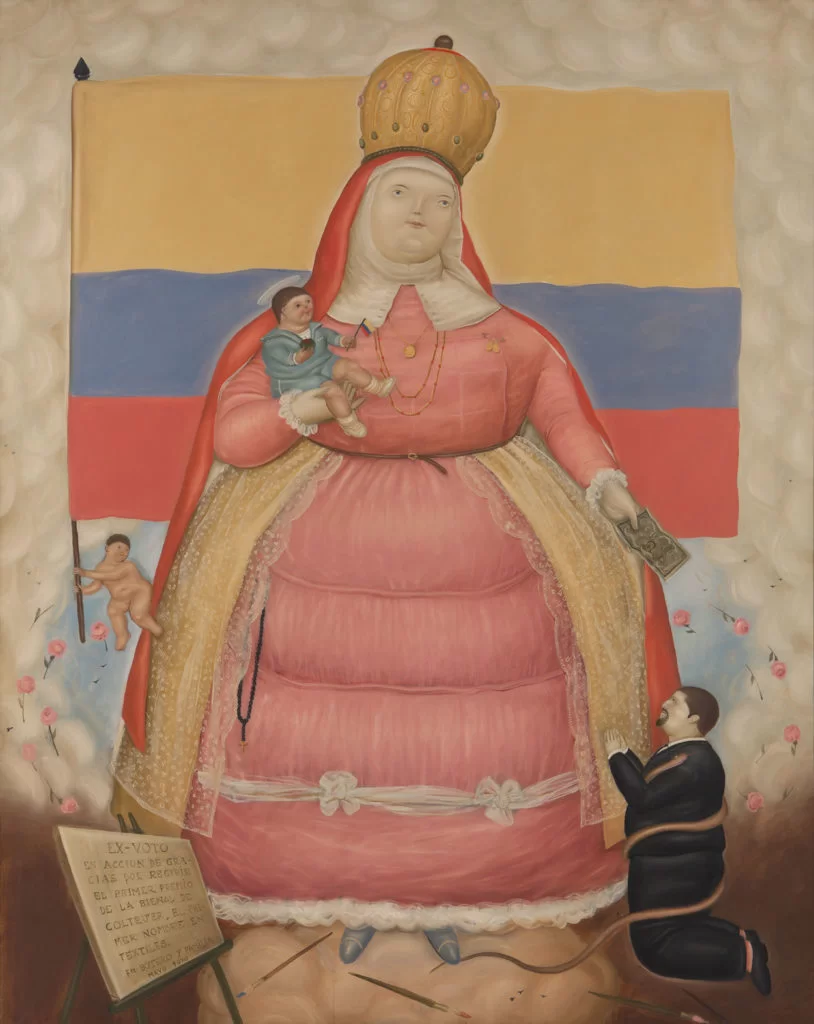
Fernando Botero, Ex – Voto, 1970, Museo de Antioquia. Medellín, Colombia.
Another fact about Fernando Botero is that he loved his country. He even gave himself the title of “the most Colombian of Colombian artists”. Colombia returns this love and as a result, the country is full of squares, roads, and plazas with his name.
Look at this painting which he painted in appreciation upon receiving first prize at the Coltejer Art Biennial (yes, it is him kneeling). Even the Virgin Mary is 100% Colombian here!
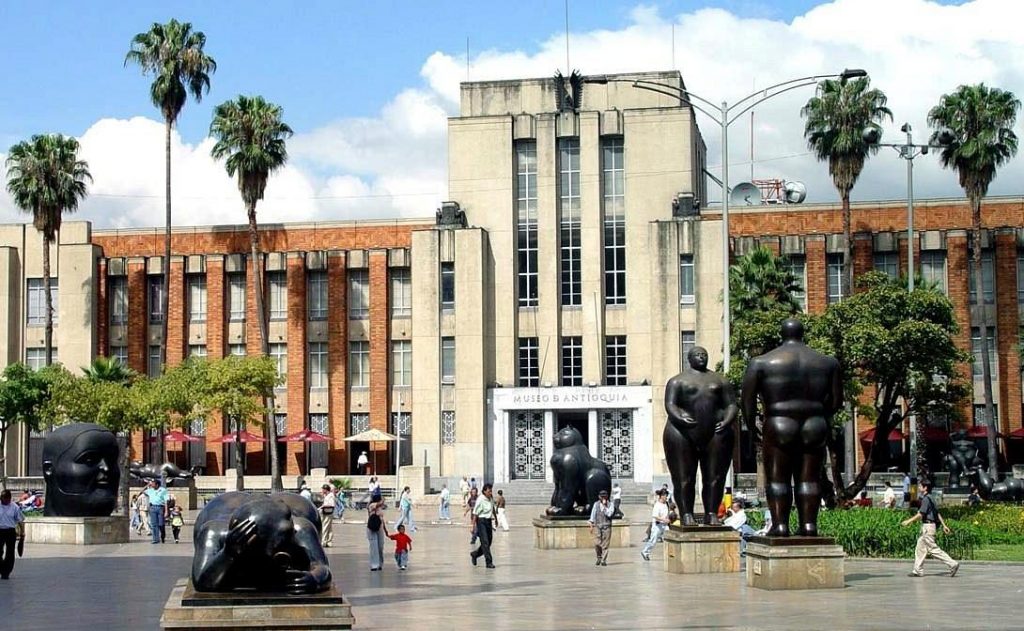
Museum of Antioquia, Medellín, Colombia. TripAdvisor.
Botero owned a number of paintings from the European Masters of the 19th and 20th centuries. He also donated more than 300 of his works to Museum de Antioquia in Medellín and to the Banco de la República in Bogotá. The second part of the collection formed the basis for the Botero Museum in Bogota.
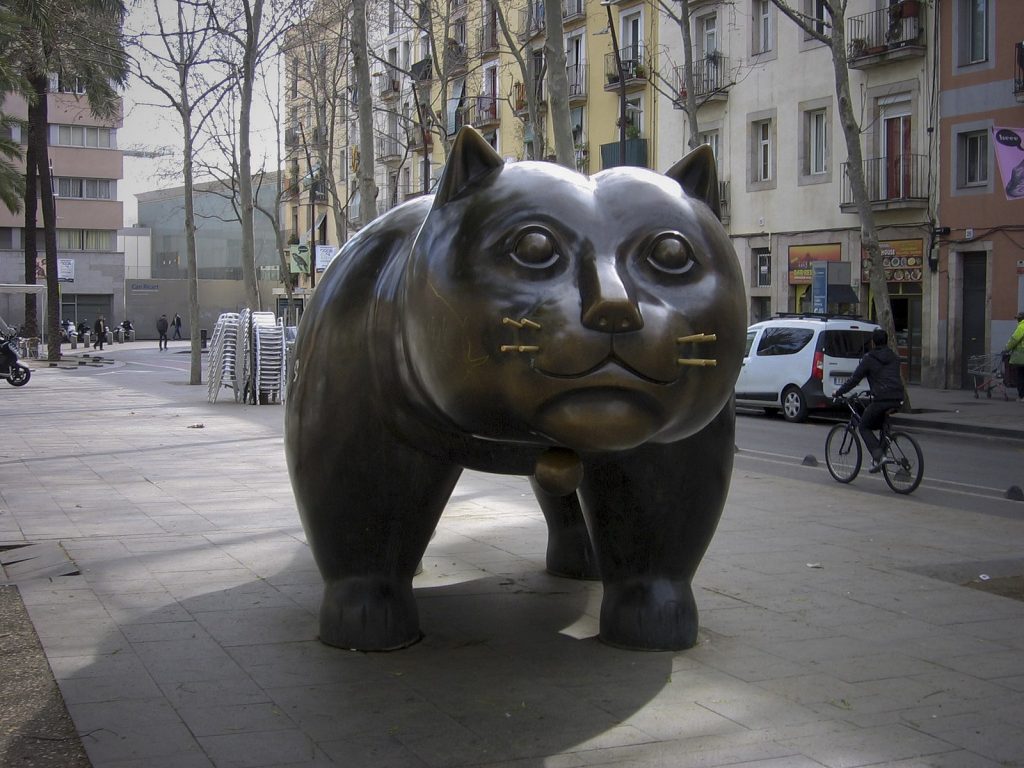
Fernando Botero, Cat, 1987, Barcelona, Spain. Photo by Canaan via Wikimedia Commons.
Along with the numerous Botero sculptures that can be seen in his native Medellín, monumental pieces by the artist can also be enjoyed on the streets of New York, Paris, Barcelona, Madrid, Jerusalem, Bamberg in Germany and Yerevan in Armenia. They all draw large crowds of visitors every day.
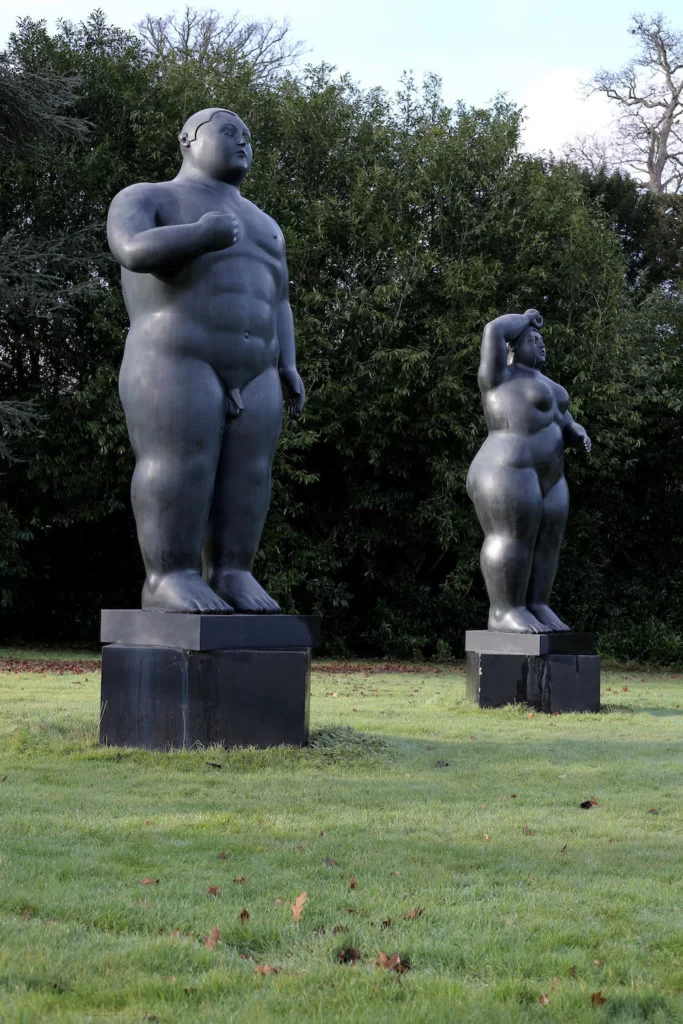
Fernando Botero, Adam and Eve. Bonhams.
Fernando Botero died reaching a beautiful age of 91 and he worked on his art tirelessly until the end. He lived and worked between Paris, Monte Carlo, Pietrasanta, and New York. Meanwhile, the demand for Botero’s paintings and sculptures remains strong. The prices of his works put on auctions show this. I can believe that, I would love to have one of his works!
Lastly, a bonus fact about Fernando Botero! It probably shouldn’t be a surprise to anyone that Botero’s painting Pope Leo X (after Raphael) became a popular internet meme. It is typically seen with the caption “y tho”. “Y tho” is an abbreviation of the question “why though?” According to KnowYourMeme it is a popular slang phrase usually asked in a trolling manner in response to a senseless action or statement. A painting of a round pope with a small face and uninterested facial expression is perfect here.
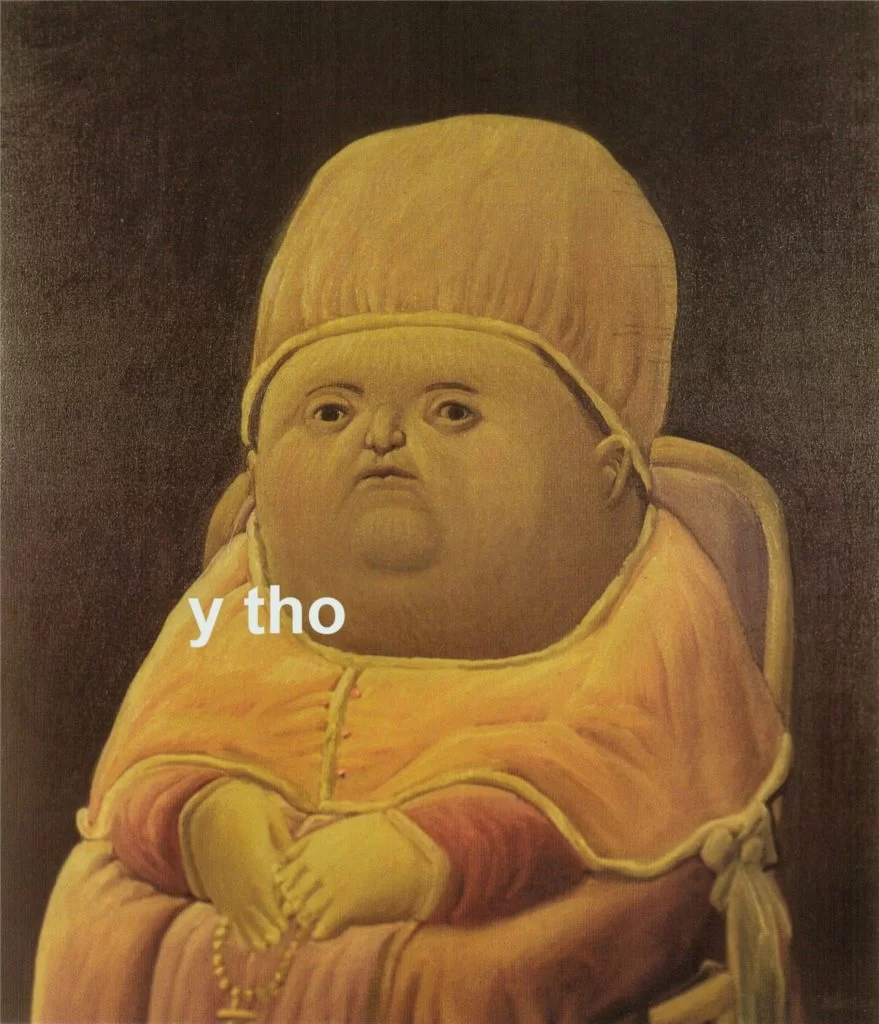
“Y tho” meme, based on Fernando Botero, Pope Leo X (after Raphael), 1964. KnowYourMeme.
DailyArt Magazine needs your support. Every contribution, however big or small, is very valuable for our future. Thanks to it, we will be able to sustain and grow the Magazine. Thank you for your help!